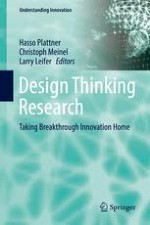2016 | OriginalPaper | Buchkapitel
Can Anyone Make a Smart Device?: Evaluating the Usability of a Prototyping Toolkit for Creative Computing
verfasst von : Joel Sadler, Ph.D., Lauren Aquino Shluzas, Ph.D., Paulo Blikstein, Ph.D., Sakti Srivastava, M.B.B.S., M.S.
Erschienen in: Design Thinking Research
Aktivieren Sie unsere intelligente Suche, um passende Fachinhalte oder Patente zu finden.
Wählen Sie Textabschnitte aus um mit Künstlicher Intelligenz passenden Patente zu finden. powered by
Markieren Sie Textabschnitte, um KI-gestützt weitere passende Inhalte zu finden. powered by
